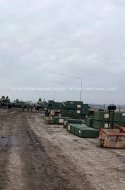Tests of Russian special forces for the right to wear a maroon beret. In the Urals, special forces of the Russian Guard were tested for the right to wear a maroon beret. Qualification tests for the right to wear the Maroon Beret were developed in 1986. Tests are being carried out on all troops at present. It is worth noting that these tests do not provide the soldier with any privileges or financial benefits. The main incentive is the direct respect of colleagues and confirmation of one’s own strength and courage. Also, increased stress on the body can affect health. The tests involve a 10-kilometer forced march. While covering the distance, fighters also need to overcome “infected” areas with gas masks and water obstacles, repel sudden enemy fire, repel an attack from the air, overcome rubble, swampy terrain and other obstacles. From time to time, soldiers are forced to move under small fire in small dashes or crawls. Throughout the entire distance, a special group works, which is engaged in “psychological processing”, putting pressure on the special forces. Along the entire route, the soldiers are accompanied by instructors who monitor the correctness of overcoming obstacles. After the march, the skills of storming high-rise buildings are tested. Next, training matches are held, lasting 12 minutes, with a break of no more than a minute to provide medical assistance. During sparring, 4 partners change. It is worth noting that for special forces soldiers whose age is 35 years or older, there is a special, abbreviated program. The video describes only the main stages of the tests.



